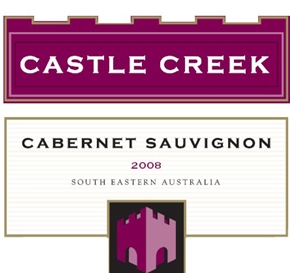One of the most heated arguments among wine lovers is not actually about wine at all. It’s about whether you serve it directly from the bottle, or first pour it into a decanter. Even the experts disagree. Originally wine was decanted because it often contained sediment which made it look unsightly. Contrary to popular belief, there is no mystique in decanting, but I admit that it’s a bit of a palaver. Unless you drink very old and expensive wines from Bordeaux and Burgundy you’ll probably never need to do it. In any case, sediment is unlikely to be found in anything you buy at the supermarket.
A more important reason for using a decanter is to get plenty of air into the wine. Strictly speaking, this is not decanting but aerating. You aerate wine by pouring the whole bottle into another container whether it’s a decanter, carafe or glass jug. The air contact encourages the aromas and taste to develop. Opening the bottle a few minutes in advance (“to let it breathe”) is totally pointless, even though you see it done in restaurants all the time. The air can reach only the tiny surface area in the neck of the bottle and has virtually no effect. The wine will get much more air if it’s poured straight into the glass.

So, should you always aerate your wines? Well, it depends. I tend to taste them first. If the wine feels “closed” I would aerate it, but I admit that a bit of practice is helpful here. Normally young reds benefit from being aerated, whites probably less so. You don’t need to pour it gingerly as though it were liquid gold, once you’ve got the top of the bottle over the decanter, just tip it vertically and let the wine slosh in, so that air (or rather, the oxygen in the air) can really get to work. This is probably best done in the kitchen rather than at the table, in case you make a complete hash of it. Yes, it has been known.
I would tend to aerate most off-the-shelf red wines. It won’t do them any harm and will almost certainly enhance the aromas and taste. On the other hand some wines, especially fresh whites don’t really need to be aerated at all. The important thing is that once the wine is in the decanter, it won’t keep for long, so drink it up.
Another reason to use a decanter is when the wine bottle has an especially ugly or cheap-looking label, or you want to conceal the bargain price you paid. Then the decanter will help keep your secret.
Castle Creek Cabernet Sauvignon 2010 (red), Australia. (Villa Bt. 349)
Perhaps the name conjures up romantic images of a splendid medieval castle, a slowly meandering river and acres of sweeping vineyards along its banks. Now I don’t want to spoil your day, I honestly don’t. But I think you should know that there are not very many medieval castles in Australia. Not very many at all. Far be it from me to disappoint you, but the castle, to be honest, is a bit unlikely.
Anyway, the wine. This is one of those wines and that smells and tastes much more expensive than it actually is, but you absolutely must get some air to it first. Splash it into a large decanter and give it a bit of time to breathe.
There’s an aroma of cherries, blackcurrants and woody, prickly spices, a dash of herbs and mint. It has a lovely mouth-feel with bucket-loads of fruit up front. Blackcurrants seem to dominate the taste. It’s quite a light-bodied little number with very soft tannins. There’s a long fruity finish, too, with a delicate foundation of tannin. The long finish, incidentally, is nearly always an indicator of a well-crafted wine. It’s well-balanced and would make a good partner for red meats, dishes like Beef Bourguignon or even some mature cheeses. I rather enjoyed this attractive wine, especially at the price.
Oh yes, I’m really sorry if you’re disappointed about the castle. Of course, you can always cheer yourself up by going out and buying a new decanter.




